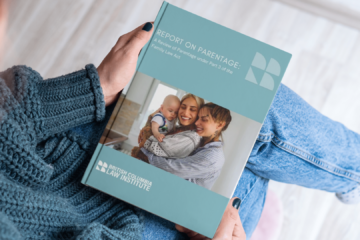Abuse of Older Women – Presentation to the House of Commons Standing Committee on the Status of Women
November 1, 2011
BY Alison Taylor
1 November 2011—On October 25, 2011, National Director Krista James made a presentation to the House of Commons Standing Committee on the Status of Women, as part of the committee’s study into abuse of older women in Canada. Below is Krista’s 10-minute presentation. The CCEL also provided the committee with a 16-page brief. Click here to download a copy.
Abuse of older women is a complex phenomenon. There are many different forms of abuse and different kinds of victims, and no single legal framework or social program is likely to capture all circumstances that fall under the umbrella concept of abuse of older women. Addressing abuse of older women thus requires a multi-faceted national strategy.
This submission identifies some areas where the federal government can take leadership in furthering policy and program development with respect to abuse of older women.
1. Older women have different needs / experiences
Over the years communities and governments have developed legislation, programs and policies that have been successful in assisting women to stop the violence in their lives; however, few programs recognize the unique needs and experiences of older women.
To highlights some themes discussed in our brief:
o Links between financial abuse and physical neglect
o Abuse by a power of attorney or substitute decision-maker
o Chemical or medication abuse – denial of medication, over-medication, inappropriate decisions regarding treatment, not getting proper consent for treatment
o Interdependency – women harmed by people who are dependent on them for care or financial, emotional or other support; sometimes women are harmed by people who are caring for them – less common
o Family relationships are important to older women
o Desire to age in place and fear of institutionalization and loss of independence
o Factors including financial dependency, disability or illness can mean it will take longer for an older woman to develop a strategy to live free of abuse
o Isolation – key factor emerging from social science research, how do we connect with older women in their communities?
Recommendation 1
The needs of older women can be different from those of younger women survivors of abuse. Communities and organizations should be funded to create resource agencies and programs that provide support and assistance to older women who have experienced abuse, with particular emphasis on making those resources accessible to older women who are isolated.
2. Older women are diverse
There is very little Canadian research on elder abuse in marginalized communities, such as abuse experienced by First Nations women, Inuit and Métis women, immigrant women and low-income women. However, the limited research that does exist suggests that marginalization complicates abuse.
Recommendation 2
Older women are diverse and factors such as immigration status, First Nations, Inuit and Métis heritage, and poverty have implications for the kinds of abuse women experience as well as the types of assistance that will be helpful and welcome. Further research should be conducted to identify appropriate strategies and resources that target different communities of older women and also to increase general understanding of dynamics of abuse that are unique in different communities.
The idea is to develop a strategy that will be welcome and provide workable solutions.
3. Focus on prevention
Law tends to be reactive. Legislation provides for a remedy in some circumstances of abuse, generally only after abuse has occurred:
1. Protection for persons in care legislation to some extent addresses the circumstances of vulnerable older women residing in care facilities – framework of mandatory reporting of mistreatment.
2. Adult protection, neglect and guardianship legislation provides some solutions where a victim is an older woman who lacks mental capacity or is unable to access assistance due to a disability or a medical condition.
3. Domestic violence legislation provides some tools where the abuser is a co-resident family member or partner.
4. The Québec Charter can provide a route to a financial remedy for circumstances involving exploitation of a dependent and vulnerable older woman.
5. The public guardian may have powers of investigation and asset-freezing in circumstances of financial abuse or abuse by substitute decision-maker, eg, trustee, POA.
6. The Criminal Code framework is reactive and offender-focused, allowing for punishment of an offender where a criminal act occurred. The criminal law also only applies to criminal acts: many examples of abuse will either not amount to a crime (for example, emotional abuse), or be too difficult to prosecute due to the age of the victim or other dynamics, reluctance to see negative consequences to a loved one who is an abuser.
Recommendation 3
An effective national strategy for addressing abuse of older women includes strategies for prevention. This means providing women with alternatives to tolerating abuse, by addressing some of the underlying factors that contribute to dynamics of abuse, such as: economic insecurity; access to resources; awareness of rights; de-stigmatization of victimization, for example, through public awareness campaigns; assistance with caregiving responsibilities; and training and ongoing support for various professional and service-provider communities – including health care, banking and justice – in relation to abuse of older women.
4. Focus on empowering older women
Where legislation, and sometimes policy, identifies remedies in circumstances of risk and abuse the remedies are often protective measures that take control, independence and power away from a vulnerable older women.
For example, guardianship and substitute decision-making, while necessary in some instances of mental incapacity, remove decision-making power from the older woman. Measures that result in removing a woman from her long-time home and placing her in a care facility or retirement home also undermine independence. Legal institutions focused on mandatory reporting and disclosure of a woman’s personal information undermine autonomy, privacy and free decision-making under the guise of protection.
For many older women who are caregivers for their abuser accessing support and assistance is also compounded by dependency and interdependency. Women must be empowered to identify solutions that will work best for them. Sometimes this may mean allowing a woman to live in a relationship of abuse, at least until resources can put into place to help her make certain life changes, because there are no acceptable immediate alternatives.
Recommendation 4
Abuse of women is generally understood, at least in the domestic violence context, to be an act of control that undermines the autonomy, power and confidence of the victim. Legal and social policy should not prioritize protectionist goals at the expense of undermining women’s autonomy and personal power. Rather, legal and policy strategies should be developed through a lens that focuses on empowering older women survivors of abuse – by raising awareness of options, increasing access to services, allowing women to make choices about what steps to take, and providing access to the legal and financial assistance that is required in order to follow through on those decisions.
5. Focus on practical resources and specific communities
At the national level there has been tremendous success in Canada in raising awareness about both elder abuse and domestic violence. The challenge becomes how to raise awareness of abuse through the combined lenses of age and gender, and how to provide people with information on the concrete steps they can take to address abuse in their communities. There remains a lack of public awareness about (1) what an older woman can do if she experiences abuse, and (2) what concerned individuals can do if they believe an older woman is being mistreated, abused or exploited.
Recommendation 5
There is a need to further raise awareness about abuse of older women with a focus on identifying available resources. People need to know how they can participate in supporting vulnerable older women in their communities to access timely support and assistance. Given the threat isolation poses in the area of elder abuse, older women need practical information that pertains to locally available accessible resources, and public awareness initiatives should target remote communities.












































